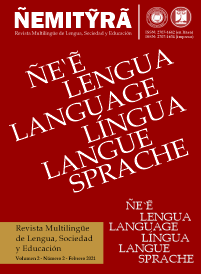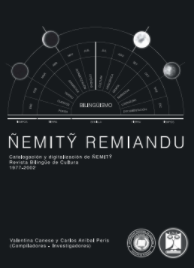When a lie is more believable than the truth: the dynamics of Lying and Discourse analysis
Palabras clave:
Big Data, Lying, Big Five Personality Traits, Political Warfare Executive, Propaganda, Social Media, Truthfulness, Watson, World War IIResumen
This article describes the preliminary findings of a research project that is investigating whether there are stable and consistent personality traits found in propaganda texts that indicate whether a statement disseminated via a media is truthful or not. It is not often the case that official government sources will clearly state whether a statement previously release was intended to be truthful or not. Even when a statement is shown to be false, the claim is usually made that it was unintentionally wrong or misleading. The project uses the Rumours Broadcasts targeting German troops and civilians in France, created by the British Political Warfare Executive from July 1942 to May 1945, consisting of over 200,000 words, to analyse the personality differences between true and false statements made in those broadcasts. The first question answered in the study is the amount of fictional versus non-fictional material is necessary to make a broadcast believable. This establishes a benchmark for determining consistent differences between true and false statements in a news release or broadcasts. The analysis is done using tools developed by IBM to examine the vast amounts of data created and displayed on various social media platforms in accordance with the Big Five Personality Traits Theory. While most of the personality traits identified by these tools do not reveal any significant differences, there are some, such as a lack of imagination, cautiousness, a lack of willingness to compromise, and worry, that show consistent significant differences between the fictional and non-fictional statements.
Referencias
Arciuli, J., Mallard, D., and Villar, G. (2010). “‘Um, I can tell you’re lying’: Linguistic Markers of Deception Versus Truth-Telling in Speech.” Applied Psycholinguistics 31 (2010) 397-411.
Chen, Y., Conroy, N.J., and Rubin, V.L. (2015). “Misleading Online Content: Recognizing Clickbait as ‘False News’.” WMDD'15 (2015), 15-19.
Fitzpatrick, E., Bachenko, J., and Fornaciari, T. (2015). Automatic Detection of Verbal Deception. Morgan & Claypool, 2015.DOI 10.2200/S00656ED1V01Y201507HLT029
Girlea, C. (2010). “Decoding the Perception of Sincerity in Dialogues.” IEEE Transactions on Affective Computing 1 (2010) 1, 1-13.
Hauch, V., Blandón-Gitlin, I., Masip, J., and Siegfried, L. (2015). Sporer. “Are Computers Effective Lie Detectors? A Meta-Analysis of Linguistic Cues to Deception.” Personality and Social Psychology Review 19 (2015) 19(4), 307–342.
Kirner-Ludwig, M. (2020). “Creation, dissemination and uptake of fake-quotes in lay political discourse on Facebook and Twitter.” Journal of Pragmatics 157 (2020) 101-118.
McGlynn, J., and McGlone, M. (2014). “Lying.” Encyclopaedia of Deception. Ed. Timothy R. Levine. Sage Publishing, 2014. Pp. 581-585.
Meibauer, J. (2018). “The Linguistics of Lying.” Annual Review of Linguistics 4 (2018) 357-375. Political Warfare Executive. “PWE/Sibs German Files: G.9 Rumours.” The National Archives (London).
Repke, M.A. (2018). Lucian Gideon Conway III, and Shannon C. Houck. “The Strategic Manipulation of Linguistic Complexity: A Test of Two Models of Lying.” Journal of Language and Social Psychology 37 (2018) 1, 74–92.










